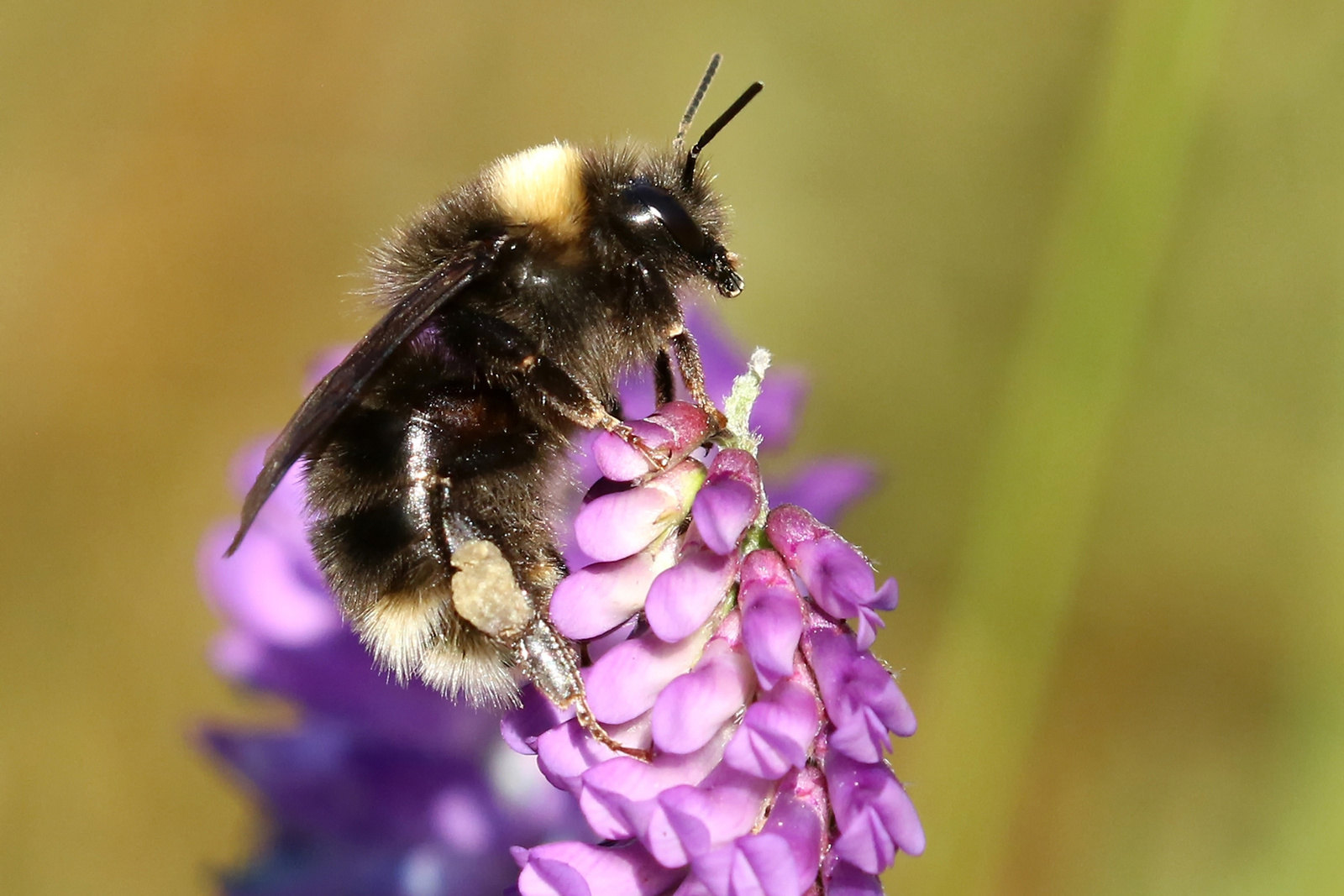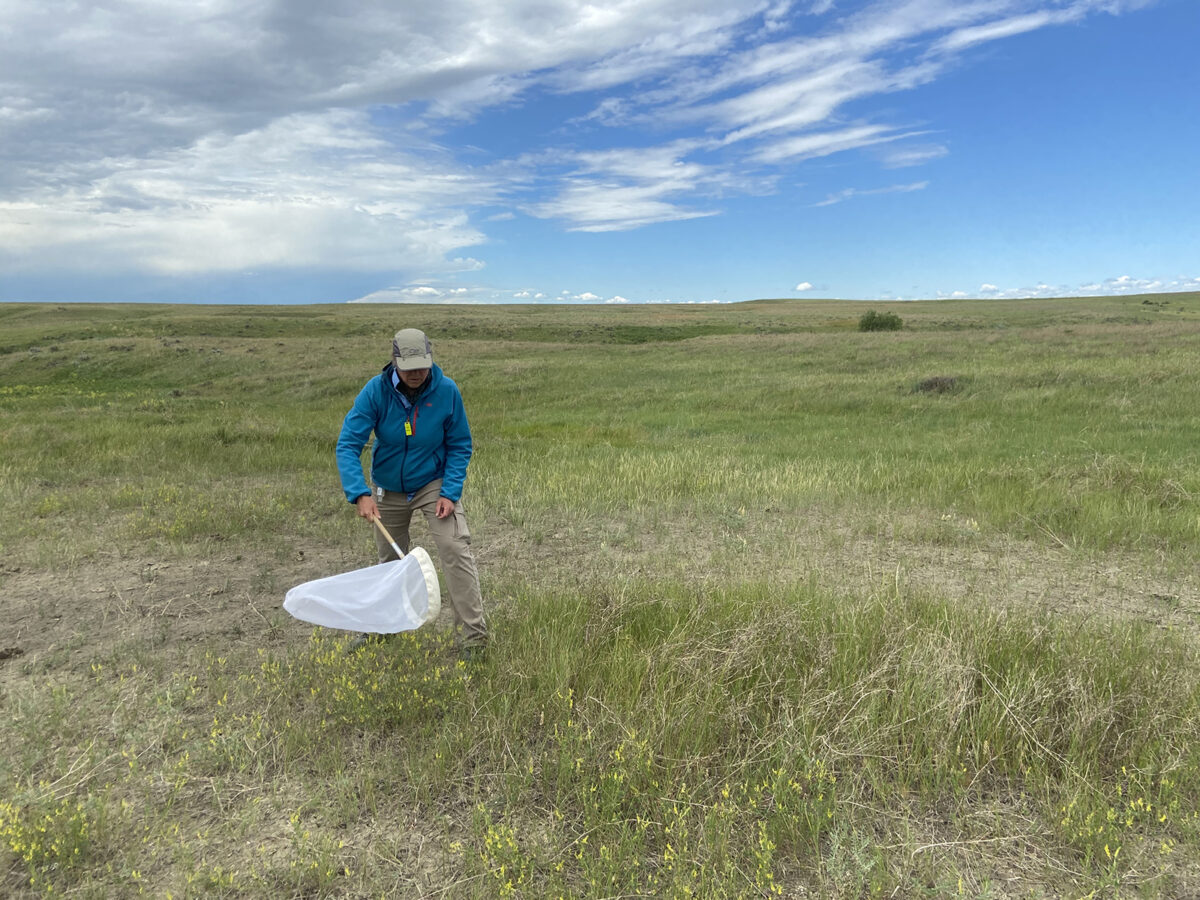Study: Decline of Native Western Bumble Bee Linked to Climate
New USGS-led study, which includes data from Glacier National Park, reveals how the absence of a once-common pollinator can cause potential cascading effects on critical ecosystems
By Tristan Scott
Once common throughout western North America, the native western bumble bee has experienced a steep 57% decline across its historic range as increasing temperatures, drought and widespread pesticide use contribute to devastating habitat contractions, according to a new U.S. Geological Survey-led study published by the Proceedings of the National Academy of Sciences (PNAS), which included data from Glacier National Park.
Relying on 23 years of survey data, the research spotlights yet another instance of how climate change is driving “the acute decline in global biodiversity” and examines how the absence of a once-common pollinator like the bumble bee can cause potential cascading effects on critical ecosystems, including a reduction in fruits, seeds and nuts that both humans and wildlife rely on.
The scientists projected the future status of the western bumble bee in 16 regions of the western United States in the 2050s under different scenarios, considering increasing levels of future climate stressors, changing forest and shrub cover, and other factors.
The study’s most optimistic scenario forecasts occupancy declines in almost half of western ecoregions by the 2050s, while more severe scenarios predict declines in all ecoregions ranging from 51% to 97%. Moreover, the population decline of the western bumble bee, considered a generalist species, is a bellwether for loss across many others that are “taxa sensitive” to environmental changes around the globe, according to the study.
In Montana, which is included in the study’s Northern Rocky Mountains ecoregion, the research tracks a 37% decline between 1998 and 2020; in the Greater Yellowstone Ecoregion, the data reveals a 15% decline. Further west, the declines are more significant, including in the Cascade Range (-67%), the Coastal Forest (-75%), the Southern Rocky Mountains (-72%), and the Colorado Plateau and Wyoming Basin (-63%).
To further complicate matters for the western bumble bee, climate change continues to make rising temperatures and drought more common in the western states, exacerbating the environmental stressors affecting the species, according to the study.

“Even considering the most optimistic scenario, western bumble bee populations are expected to continue to decline in the near future in nearly half of the regions across the bumble bee’s range,” said Tabitha Graves, a USGS scientist based in Glacier National Park, and the co-lead author on the study. “Considering the more severe, but probably more likely scenarios, western bumble bee populations are expected to decline an additional 51% to 97% from 2020 levels depending on the region.”
Using data collected from 1998-2020, scientists determined that increasing summer temperatures and drought partly drove declines of the native western bumble bee in recent decades, with rising temperatures playing a particularly important role, according to Graves. The decline in pollinators is a cause for concern because most flowering plants depend on pollinators such as the western bumble bee to promote reproduction, she explained.
“This assessment underscores the tenuous future of [the western bumble bee] and demonstrates the scale of stressors likely contributing to rapid loss of related pollinator species throughout the globe,” the study states. “Scaled-up, international species-monitoring schemes and improved integration of data from formal surveys and community science will substantively improve the understanding of stressors and bumble bee population trends.”
In addition to their role as keystone species in nearly every significant western ecosystem, pollinators are essential to the agriculture industry and economy. According to the paper, pollinators like the western bumble bee save the U.S. agricultural industry an estimated $1.5 billion annually. Pollinators also support food webs by serving as food for birds and lizards and other arthropods, such as dragonflies, ants, and spiders.
“Losing even a single common pollinator species can disrupt the entire pollinator networks, with abrupt consequences for the species that directly or indirectly rely on them for food, including humans which benefit from crop pollination services of $1.5 billion annually in the United States alone,” the study states. “Because of the integral role of pollinators across ecosystems, especially related to species of concern and human benefit, it is imperative to evaluate the drivers of pollinator declines.”
According to Will Janousek, USGS scientist and co-lead author of the study, there has been an ongoing global decline in pollinators, including in North America. Those declines are well represented in the story of the western bumble bee, which once extended from alpine regions of Arizona and New Mexico to central British Columbia and from the Pacific coastline east to the Black Hills of South Dakota.
“The decline in the once common western bumble bee shows that common, widespread species are not excluded from this trend and our study showed that climate change is an important reason for the decline of this native bee species.”
The research team found another reason for the reduced distribution of the western bumble bee: a group of insecticides called neonicotinoids, which are commonly used in agriculture. In areas where neonicotinoids were applied, the western bumble bee was less likely to occur and as the rate of neonicotinoid application increased, the bumble bee’s presence declined further.
In addition to the deleterious effects of climate change, habitat destruction and pesticides, studies have attributed declines of western bumble bee populations to a fungus known as Vairimorpha bombi. However, until now, no studies have quantitatively investigated the cumulative effects of changing climate, habitat and pesticide use.
“Therefore, the effect of each of these stressors, independently or concurrently, remains unclear, subsequently leaving best management directions equally uncertain,” the study states.
In 2015, the U.S. Fish and Wildlife Service (FWS) was petitioned to list B. occidentalis as threatened or endangered under the Endangered Species Act.
The study was a collaborative effort between the USGS; U.S. Fish and Wildlife Service; U.S. Department of Agriculture-Agriculture Research Service; Dickinson College; Canadian Wildlife Service; Montana State University; Xerces Society for Invertebrate Conservation; University of Colorado Boulder; The Ohio State University; and the University of Wyoming.
The study is published in the journal Proceedings of the National Academy of Sciences. For more information on bumble bee research in the West, please visit the USGS Northern Rocky Mountain Science Center website.